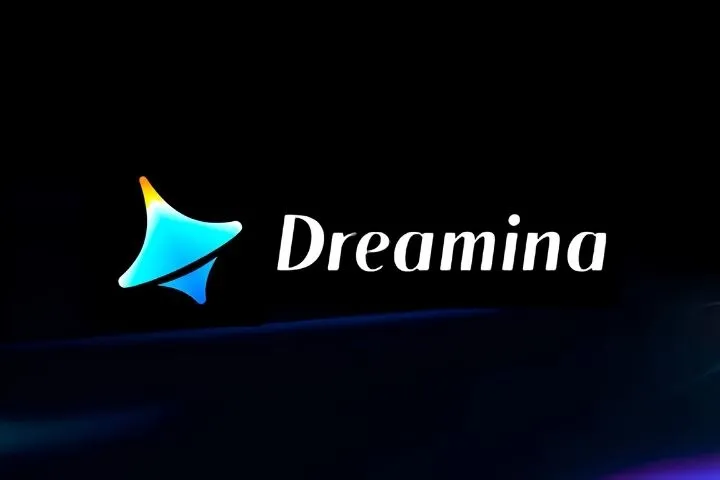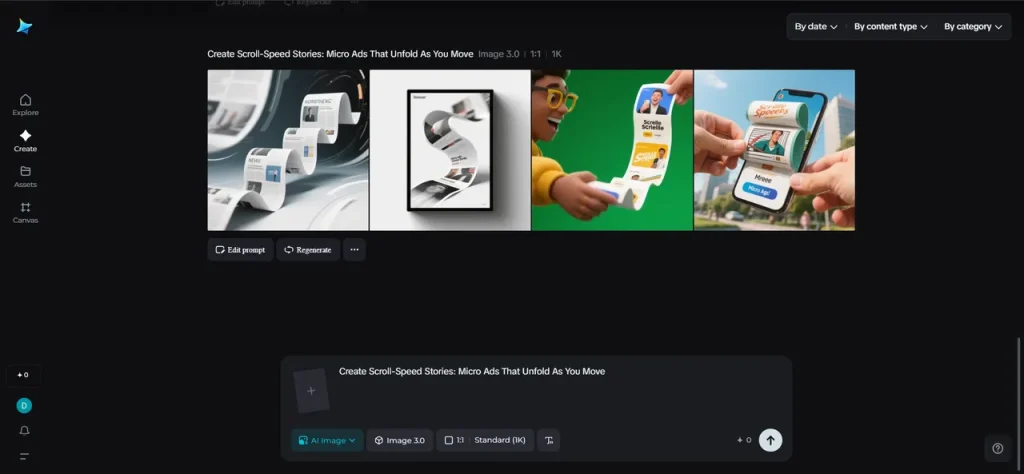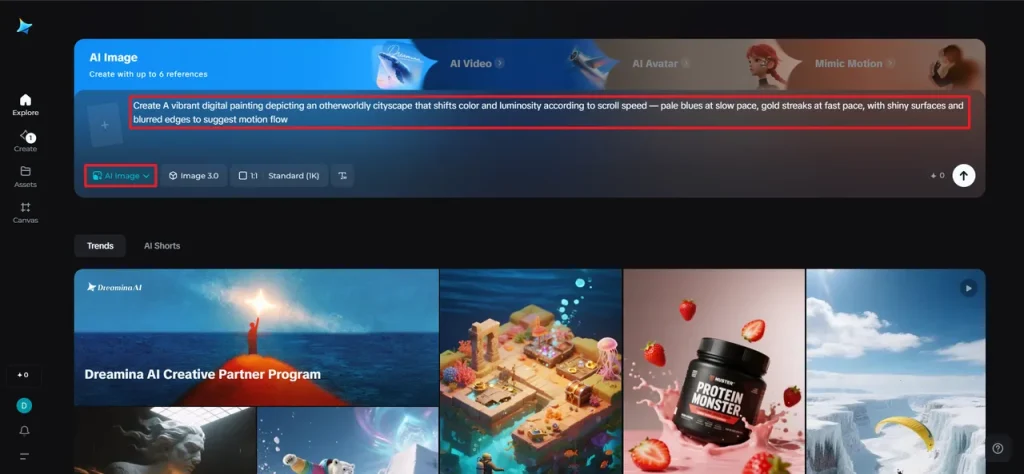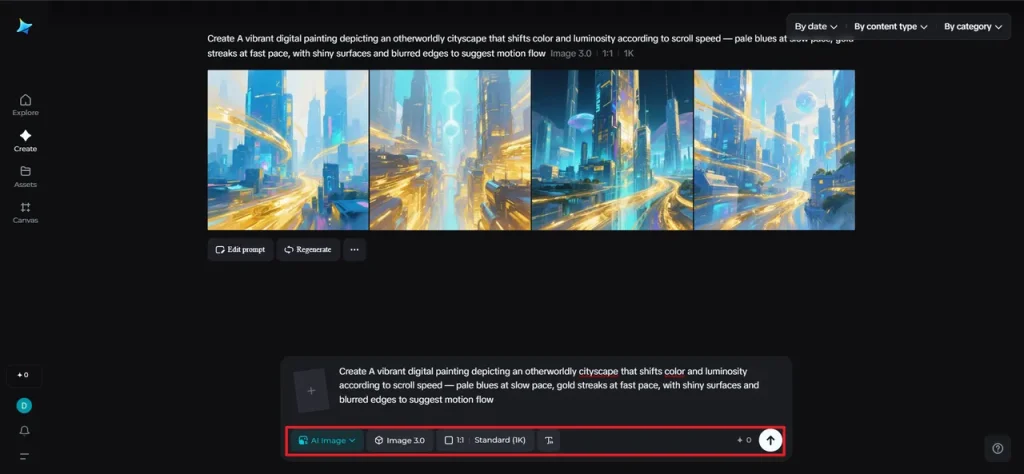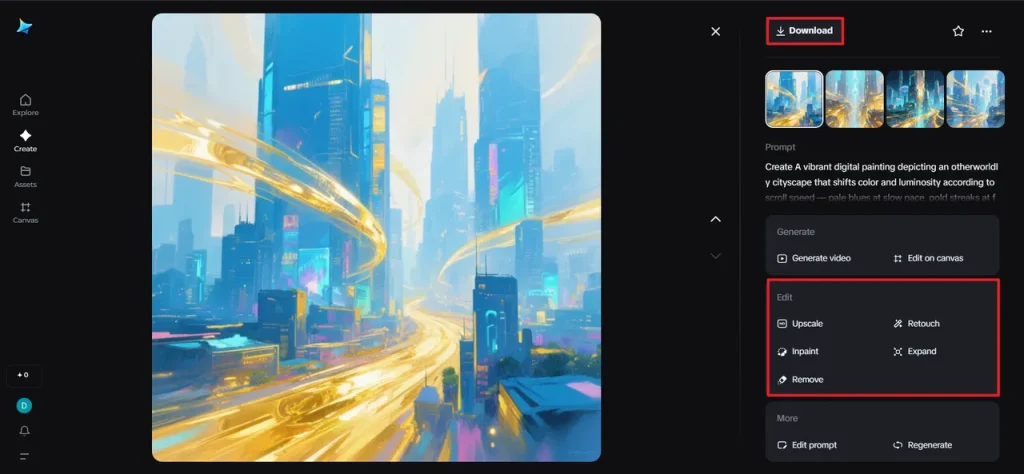Let us imagine an ad that moves in sync with your thumb. You scroll at a leisurely pace — a soft light emerges, showing a whispered slogan. You swipe at a quicker pace — colors blur, layers disintegrate, and a hidden message flashes by before you even have the chance to blink. Welcome to the new world of kinetic narrative: scroll-speed tales — micro ads that turn your movement into story.
This is no longer your fixed feed. With every flick, pause, or drag, you alter what you view. The world of vision has begun to breathe with gestures. Brands are becoming skilled at choreographing design and movement into a synchronized routine — one which relies solely upon the rhythm of the viewer. And with Dreamina’s art suite, artists can prototype this interactive poetry quicker than ever before, leveraging tools such as its AI photo generator to bring visual ideas to life even before animating them.
Because here’s the actual magic: these aren’t ads at all — they’re mini-narratives that play you back.
Kinetic advertising: When pace is plot
Speed has always told a story. A slow camera pan whispers suspense; a quick cut ignites chaos. Scroll-speed advertising uses the language of cinema and translates it into touch.
-
Slow scrolls may unveil gentle gradients, shaded text, or subtle looping textures.
-
Faster swipes may cause hidden icons or alternate messages to flash, or it may produce a glitch effect.
-
Pauses may trigger breathing animations or visuals responding to touch as if they are alive.
These micro-choreographies make each viewer a co-director. What was once a passive commercial is now a playable moment — a kinetic puzzle of pace and perception.
Designing for the restless thumb
Marketers are learning to thrive in a world where attention is both valuable and ephemeral. The question has stopped being “How long can we keep them?” and instead became “How can we reward every microsecond they give us?”
Scroll-speed campaigns are fueled by three ingredients:
-
Narrative layering: Messages that adapt based on scroll velocity.
-
Sensory triggers: Nuanced changes in color, light, or font weight tied to movement.
-
Dynamic reveals: Concealed visuals that emerge only when users hover or reverse scroll.
It’s not about revealing everything at once — it’s about allowing the narrative to bloom differently for each experience.
This is where branding becomes experience. Picture a perfume commercial where you scroll down slowly through mist to expose the bottle, or a shoe company that makes a heartbeat GIF flash as your thumb speed-runs down the screen. It’s tempo as design language — and the design responds to you.
From rhythm to identity: A new design grammar
The most compelling aspect of scroll-speed storytelling is the way it redefines brand identity. Branding used to depend on frozen consistency. But in the age of motion, consistency equals coherence through movement.
A few businesses are already producing dynamic identity systems with generative technology. Rather than one logo or color scheme, they possess responsive frameworks — design assets that bend, warp, and recombine themselves with user input.
This is where an AI logo generator steps in as an indispensable partner. It enables designers to create several style variations that are still distinctly “on-brand,” but act differently in different contexts — a logo that stretches out in one scrolling sequence, and tucks in another. Not merely about looks — it’s change through motion.
Dynamic visual storytelling in motion
Scroll-speed ads are a new form of cinematic pacing — one reliant on the audience’s intuition, rather than a timeline. Imagine handheld storytelling.
Marketers trying this new medium tend to approach each swipe as a sentence in a ghost paragraph. The story isn’t read left to right or frame by frame — it speeds up or slows down with your interest.
And the best news? This workflow isn’t just for big-budget campaigns. With innovative platforms like Dreamina, anyone can play. Artists can create multiple layers of images, work out transitions, and preview scroll-based movements — designing touch-sensitive illusions that change according to user input.
Scroll-speed sorcery with Dreamina
Are you prepared to make your scroll-speed tale come to life? Creating vibrant, interactive images from motion-based concepts is incredibly easy with Dreamina. Here are three easy steps to make your own kinetic masterpiece.
Step 1: Write a text prompt
Begin by going to Dreamina and crafting a detailed text prompt that explains your visual idea. The more sensory description, the better.
For instance: A vibrant digital painting depicting an otherworldly cityscape that shifts color and luminosity according to scroll speed — pale blues at slow pace, gold streaks at fast pace, with shiny surfaces and blurred edges to suggest motion flow.
This prompt provides inspiration to create layered, motion-friendly visuals ready to animate in scroll-speed ads later on.
Step 2: Choose your parameters and generate
When the prompt feels acceptable, work through the parameters by selecting a model that meets your visual tone, the aspect ratio (use 16:9 for widescreen digital layouts), and resolution (1K for quick drafts, 2K for refined designs). Click the Dreamina icon to generate your artwork. The end result is a kinetic-ready canvas, an image that captures stillness, while also embodying motion.
Step 3: Customize and download
With your artwork generated, you can use Dreamina’s AI editing features: inpaint, expand, remove, and retouch, to refine any transitions and suggest subtle motion. For example, you might lengthen a cloud trail, enhance reflection, or blur the edges of something flowing. When you are done, tap the “Download” icon and save your design and download it to be reused in your animations or your scroll speed ad concept.
Responsive storytelling outside the feed
Scroll-speed storytelling does not stop at social media. It’s creeping into web design, interactive posters, and even physical installations that are synchronized with motion sensors. The vocabulary of motion is going mainstream — users want it, need it, and now, brands are getting the message.
This is where an AI poster generator comes in. Designers can create responsive ad templates that adapt layouts automatically — a poster that adjusts colors under a different scroll angle or changes typography rhythmically with movement. It’s dynamic storytelling without having to involve a coder — pure creativity fueled by AI.
Every swipe tells a story
Scroll-speed storytelling makes each movement an act of creativity. Every consumer writes a slightly altered version of the same commercial — some pause, some speed up, all find something new. That uniqueness drives emotional ownership; it’s not merely an ad you viewed, but an ad that moved with you.
In this new age of imagination, Dreamina is co-director. Its set of generative tools gives creatives, advertisers, and dreamers the power to create visuals that breathe, react, and change — swipe by swipe.
Because tomorrow’s storytelling isn’t linear any longer.
It scrolls.
Long or Short, get news the way you like. No ads. No redirections. Download Newspin and Stay Alert, The CSR Journal Mobile app, for fast, crisp, clean updates!
App Store – https://apps.apple.com/in/app/newspin/id6746449540
Google Play Store – https://play.google.com/store/apps/details?id=com.inventifweb.newspin&pcampaignid=web_share

